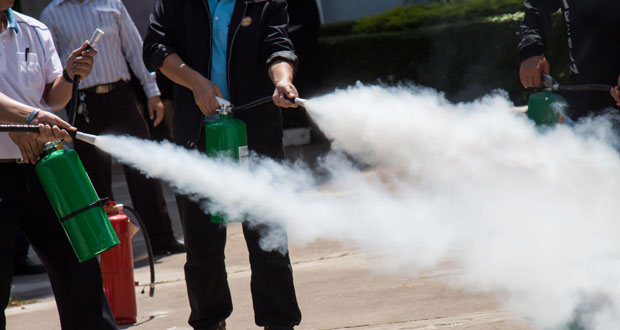Commercial properties left vacant or unattended throughout the pandemic are likely to have deteriorated over time, creating increasingly hazardous environments. Recent data has revealed that, despite a decline in fatal fire related incidents since 2011, there has been an increase in incidents attended proving that many properties still don’t have the correct fire safety measures in place.
Commercial property fires saw an increase of 46 per cent over lockdown, and whilst facilities are now likely occupied as businesses reopen, experts say fire safety measures should continue to be enforced to mitigate risk. Without the correct fire safety measures, not only are facility users, the property itself and surrounding areas in danger, but those responsible may be at risk of serious fines and prison sentences.
MSL Property Care Services is warning businesses of the top causes of fires and details how to prepare properties to help reduce fire related incidents.
Top causes of commercial fires
- Electrical and Lighting Fixtures
Issues, such as faulty fuses, loose connections, overloaded circuits, and defective wiring can all lead to fires breaking out within commercial properties. It’s important to have regular professional checks of wires and fixtures, especially if you suspect a hazard.
- Heating systems
When used over prolonged periods of time or left unused, heating systems can be at risk of faults, leading to overheating and consequently fires. It’s essential that systems are regulated, switched off or set to timers before leaving the premises along with ensuring that they are inspected regularly for any faults.
- Exposure to Flammable Materials
Exposure to flammable sources, such as cladding, chemicals, spray paint, alcohols, and foil increases the risk of a fire outbreak. Whilst many facilities and businesses will consciously and carefully store flammable materials away, some materials cannot avoid exposure. Here, it’s important to assign a facilities management professional to assess materials, such as cladding and wood throughout the property.
- Cooking Equipment
Kitchen apparatus is the biggest cause of fire breakouts within commercial properties, with kitchen appliances equating for 41 per cent of all fires on average. Whilst restaurants are most at risk, many businesses have cooking appliances on the premises, such as microwaves, toasters and kettles therefore it’s important these are all tested for safety.
How can you mitigate fires?
‘The Fire Regulatory Reform (2005), states that those responsible for fire safety, can include various personnel such as the property owner, landlord, employer, occupier or facility manager, and it’s crucial that those people are educated on fire safety for the premises. The correct training and safety plans should be in place, and businesses should consult professionals where needed to ensure the safety of all occupants’, explains Jeremy Harrison, Managing Director of MSL Property Care Services.
- Remove fire hazards
Invest in safeguarding inspections to ensure that any fire hazards are identified and mitigated. These checks should be routinely carried out and implementing them within your planned maintenance schedule will ensure this happens.
- Update your fire safety plan
Regularly revaluating the property, both internally and externally, is important so that the correct measures are put in place should a fire break out. It is also crucial that all staff and other facility users are aware of this plan.
- Implement training
All regular facility users should have fire safety training before occupying the property. Should your safety plan change, the responsible person(s) should carry out this training again.
- Install or update your fire safety systems
Fires can spread at rapid rates, so installing fire safety systems, such as fire alarms, sprinklers, fire doors and extinguishers is a key. It is just as important to implement regular checks, which can be carried out by facility professionals to ensure these are working correctly.
As workplaces open up and restrictions lift the role of the FM has become more important than ever.
The challenges presented by the Covid-19 pandemic are now providing a valuable opportunity for FMs to demonstrate their skills and adaptability. Whilst on a practical level FMs are responsible for making buildings safe and comfortable, they are also crucial in attracting people back to the office.
In speaking with industry leaders, it is clear that there are six key areas of focus. Zip has published a white paper which looks at each one, suggesting ways that facilities managers can tackle the complexities and pace of a return to the workplace, whilst demonstrating clear and effective leadership along the way.
To find out more download the white paper here.






